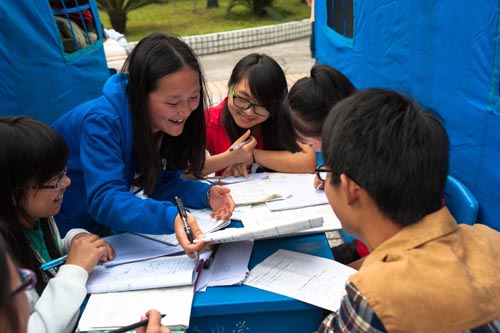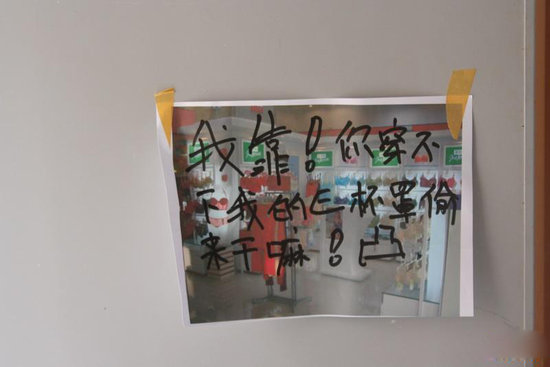第三部分:阅读理解(共20小题;每小题2分,满分40分)
阅读下列短文,从每篇短文后所给各题的四个选项(A、B、C和D)中,选出最佳选项,并在答题卡上将该项涂黑。
A
Some years ago, writing in my diary used to be a usual activity. I would return from school and spend the expected half hour recording the day’s events, feelings, and impressions in my little blue diary. I did not really need to express my emotions by way of words, but I gained a certain satisfaction from seeing my experiences forever recorded on paper. After all, isn’t accumulating memories a way of preserving the past?
When I was thirteen years old, I went on a long journey on foot in a great valley, well-equipped with pens, a diary, and a camera. During the trip, I was busy recording every incident, name and place I came across. I felt proud to be spending my time productively, dutifully preserving for future generations a detailed description of my travels. On my last night there, I wandered out of my tent, diary in hand. The sky was clear and lit by the glare of the moon, and the walls of the valley looked threatening behind their screen of shadows. I automatically took out my pen…
At that point, I understood that nothing I wrote could ever match or replace the few seconds I allowed myself to experience the dramatic beauty of the valley. All I remembered of the previous few days were the dull characterizations I had set down in my diary.
Now, I only write in my diary when I need to write down a special thought or feeling. I still love to record ideas and quotations that strike me in books, or observations that are particularly meaningful. I take pictures, but not very often—only of objects I find really beautiful. I’m no longer blindly satisfied with having something to remember when I grow old. I realize that life will simply pass me by if I stay behind the camera, busy preserving the present so as to live it in the future.
I don’t want to wake up one day and have nothing but a pile of pictures and notes. Maybe I won’t have as many exact representations of people and places; maybe I’ll forget certain facts, but at least the experiences will always remain inside me. I don’t live to make memories—I just live, and the memories form themselves.
51. Before the age of thirteen, the author regarded keeping a diary as a way of ______.
A. observing her school routine B. expressing her satisfaction
C. impressing her classmates D. preserving her history
52. What caused a change in the author’s understanding of keeping a diary?
A. A dull night on the journey. B. The beauty of the great valley.
C. A striking quotation from a book. D. Her concerns for future generations.
53. What does the author put in her diary now?
A. Notes and beautiful pictures. B. Special thoughts and feelings.
C. Detailed accounts of daily activities. D. Descriptions of unforgettable events.
54. The author comes to realize that to live a meaningful life is ______.
A. to experience it B. to live the present in the future
C. to make memories D. to give accurate representations of it
B
Mothers and daughters go through so much—yet when was the last time a mother and daughter sat down to write a book together about it all? Perri Klass and her mother, Sheila Solomon Klass, both gifted professional writers, prove to be ideal co-writers as they examine their decades of motherhood, daughterhood, and the wonderful ways their lives have overlapped (重叠).
Perri notes with amazement how closely her own life has mirrored her mother’s: both have full-time careers; both have published books, articles, and stories; each has three children; they both love to read. They also love to travel—in fact, they often take trips together. But in truth, the harder they look at their lives, the more they acknowledge their big differences in circumstance and basic nature.
A child of the Depression (大萧条), Sheila was raised in Brooklyn by parents who considered education a luxury for girls. Starting with her college education, she has fought for everything she’s ever accomplished. Perri, on the other hand, grew up privileged in the New Jersey suburbs of the 1960s and 1970s. For Sheila, wasting time or money is a crime, and luxury is unthinkable while Perri enjoys the occasional small luxury, but has not been successful at trying to persuade her mother into enjoying even the tiniest thing she likes.
Each writing in her own unmistakable voice, Perri and Sheila take turns exploring the joys and pains, the love and bitterness, the minor troubles and lasting respect that have always bonded them together. Sheila describes the adventure of giving birth to Perri in a tiny town in Trinidad where her husband was doing research fieldwork. Perri admits that she can’t sort out all the mess in the households, even though she knows it drives her mother crazy. Together they compare thoughts on bringing up children and working, admit long-hidden sorrows, and enjoy precious memories.
Looking deep into the lives they have lived separately and together, Perri and Sheila tell their mother-daughter story with honesty, humor, enthusiasm, and admiration for each other. A written account in two voices, Every Mother Is a Daughter is a duet (二重奏) that produces a deep, strong sound with the experiences that all mothers and daughters will recognize.
55. Why does Perri think that her own life has mirrored her mother’s?
A. They both have gone through difficult times.
B. They have strong emotional ties with each other.
C. They have the same joys and pains, and love and bitterness.
D. They both have experiences as daughter, mother and writer.
56. The word “luxury” in Paragraph 3 means ______.
A. something rare but not pleasant
B. something that cannot be imagined
C. something expensive but not necessary
D. something that can only be enjoyed by boys
57. What is Paragraph 4 mainly about?
A. The content of the book. B. The purpose of the book.
C. The influence of the book. D. The writing style of the book.
58. How are women’s lives explored in this book?
A. In a musical form. B. Through field research.
C. With unique writing skills. D. From different points of view.
C
We’ve reached a strange—some would say unusual—point. While fighting world hunger continues to be the matter of vital importance according to a recent report from the World Health Organization (WHO), more people now die from being overweight, or say, from being extremely fat, than from being underweight. It’s the good life that’s more likely to kill us these days.
Worse, nearly l8 million children under the age of five around the world are estimated to be overweight. What’s going on?
We really don’t have many excuses for our weight problems. The dangers of the problem have been drilled into us by public-health campaigns since 2001 and the message is getting through—up to a point.
In the 1970s, Finland, for example, had the highest rate of heart disease in the world and being overweight was its main cause. Not any more. A public-health campaign has greatly reduced the number of heart disease deaths by 80 per cent over the past three decades.
Maybe that explains why the percentage of people in Finland taking diet pills doubled between 2001 and 2005, and doctors even offer surgery of removing fat inside and change the shape of the body. That has become a sort of fashion. No wonder it ranks as the world’s most body-conscious country.
We know what we should be doing to lose weight—but actually doing it is another matter. By far the most popular excuse is not taking enough exercise. More than half of us admit we lack willpower.
Others blame good food. They say: it’s just too inviting and it makes them overeat. Still others lay the blame on the Americans, complaining that pounds have piled on thanks to eating too much American-style fast food.
Some also blame their parents—their genes. But unfortunately, the parents are wronged because they’re normal in shape, or rather slim.
It’s a similar story around the world, although people are relatively unlikely to have tried to lose weight. Parents are eager to see their kids shape up. Do as I say—not as I do.
59. What is the “strange” point mentioned in the first sentence?
A. The good life is a greater risk than the bad life.
B. Starvation is taking more people’s lives in the world.
C. WHO report shows people’s unawareness of food safety.
D. Overweight issue remains unresolved despite WHO’s efforts.
60. Why does the author think that people have no excuse for being overweight?
A. A lot of effective diet pills are available.
B. Body image has nothing to do with good food.
C. They have been made fully aware of its dangers.
D. There are too many overweight people in the world.
61. The example of Finland is used to illustrate ______.
A. the cause of heart disease
B. the fashion of body shaping
C. the effectiveness of a campaign
D. the history of a body-conscious country
62. Which would be the best title for the passage?
A. Actions or Excuses? B. Overweight or Underweight?
C. WHO in a Dilemma D. No Longer Dying of Hunger
D
The technology is great. Without it we wouldn’t have been able to put a man on the moon, explore the ocean’s depths or eat microwave sausages. Computers have revolutionized our lives and they have the power to educate and pass on knowledge. But sometimes this power can create more problems than it solves.
Every doctor has had to try their best to calm down patients who’ve come into their surgery waving an Internet print-out, convinced that they have some rare incurable disease, say, throat cancer. The truth is usually far more ordinary, though: they don’t have throat cancer, and it’s just that their throats are swollen. Being a graduate of the Internet “school” of medicine does not guarantee accurate self-health-checks.
One day Mrs. Almond came to my hospital after feeling faint at work. While I took her blood sample and tried to find out what was wrong, she said calmly, “I know what’s wrong; I’ve got throat cancer. I know there’s nothing you doctors can do about it and I’ve just got to wait until the day comes.”
As a matter of routine I ordered a chest X-ray. I looked at it and the blood results an hour later. Something wasn’t right. “Did your local doctor do an X-ray?” I asked. “Oh, I haven’t been to the doctor for years,” she replied. “I read about it on a website and the symptoms fitted, so I knew that’s what I had.”
However, some of her symptoms, like the severe cough and weight loss, didn’t fit with it—but she’d just ignored this.
I looked at the X-ray again, and more tests confirmed it wasn’t the cancer but tuberculosis (肺结核)—something that most certainly did need treating, and could be deadly. She was lucky we caught it when we did.
Mrs. Almond went pale when I explained she would have to be on treatment for the next six months to ensure that she was fully recovered. It was certainly a lesson for her. “I’m so embarrassed,” she said, shaking her head, as I explained that all the people she had come into close contact with would have to be found out and tested. She listed up to about 20, and then I went to my office to type up my notes. Unexpectedly, the computer was not working, so I had to wait until someone from the IT department came to fix it. Typical. Maybe I should have a microwave sausage while I waited?
63. Mrs. Almond talked about her illness calmly because ______.
A. she thought she knew it well
B. she had purchased medicine online
C. she graduated from a medical school
D. she had been treated by local doctors
64. It was lucky for Mrs. Almond ______.
A. to have contacted many friends
B. to have recovered in a short time
C. to have her assumption confirmed
D. to have her disease identified in time
65. Mrs. Almond said “I’m so embarrassed” (Para. 7) because ______.
A. she had distrusted her close friends
B. she had caused unnecessary trouble
C. she had to refuse the doctor’s advice
D. she had to tell the truth to the doctor
66. By mentioning the breakdown of the computer, the author probably wants to prove ______.
A. it’s a must to take a break at work
B. it’s vital to believe in IT professionals
C. it’s unwise to simply rely on technology
D. it’s a danger to work long hours on computers
E
A German study suggests that people who were too optimistic about their future actually faced greater risk of disability or death within 10 years than those pessimists who expected their future to be worse.
The paper, published this March in Psychology and Aging, examined health and welfare surveys from roughly 40,000 Germans between ages 18 and 96. The surveys were conducted every year from 1993 to 2003.
Survey respondents (受访者) were asked to estimate their present and future life satisfaction on a scale of 0 to 10, among other questions.
The researchers found that young adults (age 18 to 39) routinely overestimated their future life satisfaction, while middle-aged adults (age 40 to 64) more accurately predicted how they would feel in the future. Adults of 65 and older, however, were far more likely to underestimate their future life satisfaction. Not only did they feel more satisfied than they thought they would, the older pessimists seemed to suffer a lower ratio (比率) of disability and death for the study period.
“We observed that being too optimistic in predicting a better future than actually observed was associated with a greater risk of disability and a greater risk of death within the following decade,” wrote Frieder R. Lang, a professor at the University of Erlangen-Nuremberg.
Lang and his colleagues believed that people who were pessimistic about their future may be more careful about their actions than people who expected a rosy future.
“Seeing a dark future may encourage positive evaluations of the actual self and may contribute to taking improved precautions (预防措施),” the authors wrote.
Surprisingly, compared with those in poor health or who had low incomes, respondents who enjoyed good health or income were associated with expecting a greater decline. Also, the researchers said that higher income was related to a greater risk of disability.
The authors of the study noted that there were limitations to their conclusions. Illness, medical treatment and personal loss could also have driven health outcomes.
However, the researchers said a pattern was clear. “We found that from early to late adulthood, individuals adapt their expectations of future life satisfaction from optimistic, to accurate, to pessimistic,” the authors concluded.
67. According to the study, who made the most accurate prediction of their future life satisfaction?
A. Optimistic adults. B. Middle-aged adults.
C. Adults in poor health. D. Adults of lower income.
68. Pessimism may be positive in some way because it causes people ______.
A. to fully enjoy their present life
B. to estimate their contribution accurately
C. to take measures against potential risks
D. to value health more highly than wealth
69. How do people of higher income see their future?
A. They will earn less money.
B. They will become pessimistic.
C. They will suffer mental illness.
D. They will have less time to enjoy life.
70. What is the clear conclusion of the study?
A. Pessimism guarantees chances of survival.
B. Good financial condition leads to good health.
C. Medical treatment determines health outcomes.
D. Expectations of future life satisfaction decline with age.

 你现在的位置:
你现在的位置: 高考试卷
高考试卷 图片新闻
图片新闻




 热门试卷
热门试卷 教学视频
教学视频












